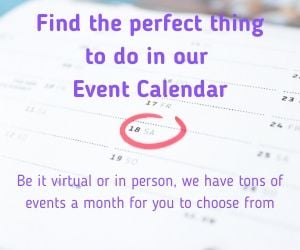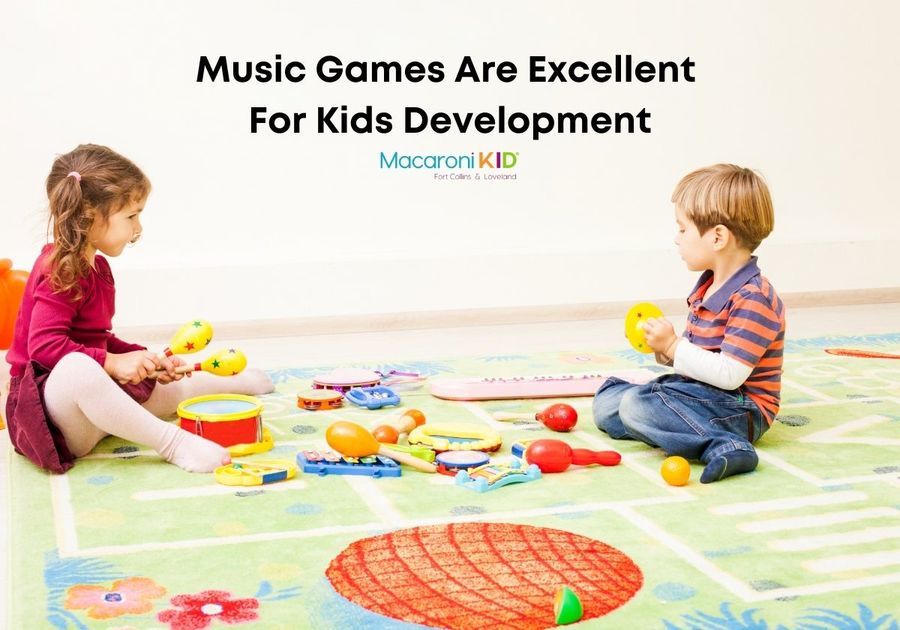Who doesn't love music?
Kids develop physically, intellectually, socially and emotionally though games associated with music. The best time to play music games is in preschool and kindergarten, however, music games are wonderful ways to have fun and keep sharp at any age.
How Do Kids Learn Through Music Games? Let's Take a look.
Developing A Childs Intellect:
A child's cognitive development is shaped through singing the words to songs, and using actions along with the words. They begin to understand symbolism which builds into pretend or symbolic play which we all know is important to early childhood.
They develop language skills which leads to increased vocabulary. They learn concepts like up/down, fast/slow, numbers, letters and so on. They also learn cause-effect relationships with movements too. Playing instruments like tambourines or bells show children what happens if you hit a tambourine it makes a sound, if you shake a bell it rings.
Sorting instruments teaches classification skills. Parent guided activities are a great way to improve children's attentiveness and attention span. It also improves memory due to repetition in songs from lyrics.
Social Emotional Development:
Singing is wonderful for building a sense of confidence and success. There isn't a wrong or right way to do things which makes the experience a positive one.
Simple songs, simple movements, simple instruments like bells and putting your Childs name in the song leads to increased feeling of self worth and self esteem.
Quiet children tend to come out of their shells using music to express their feelings. Using the songs, movement and instruments they express themselves in a positive safe comfortable way. They form a sense of self through creative expression. Playing with other children and taking turns teaches children to be considerate of others.
Development of Motivation:
Motivation is a desire to be successful, creates an urge to learn, and the need to associate positively with others.
When children are offered a chance to make choices it develops their skill of making their own decisions. They feel good about themselves. They learn self control and control of impulses. It helps teach thinking before acting, staying engaged in one activity at a time. The music relaxes, energizes and motivates children.
Motor Development:
Music games offer a great opportunity for movement through dancing, marching, walking, hopping, touching and moving body parts. Action songs like Head, Shoulder, Knees, and Toes are a great way to bring awareness to their body and how it moves. Playing instruments helps them fine tune their motor skills.
Learning how to move large muscle groups (gross motor) and small muscle groups (fine motor) is easier through music as it helps control movement through rhythm. They can explore their own bodies movement through the actions of the games. This makes them aware of what their bodies are capable of.
Playing hand games, instruments, and simple actions like tapping, snapping, clicking develop hand eye coordination.
Children learn to understand where their body is and balance through movement to music. They understand that they are above, below, in, out, near, or far from something.
The ear, brain, balance are connected and affect mood and focus. When children walk along a line or rope, hop on one leg, rock, swing or sway to music are examples of this.
Music games help develop awareness of the two sides of the body. They soon learn to do midline crossing or crossing one side of the body to the other side. These are integration of primitive reflexes and are the base for learning throughout their lives. Practicing crossing the midline helps develop physical growth in both hemispheres of their brain.
Playing instruments, clicking fingers or even drawing to a melody will build fine motor skills necessary to learn to hold a pencil to write later.
Visual Development:
Children learn through touch, seeing, hearing, smelling etc. Senses are very important in learning. Learning movements guided through the eyes is developed through eye hand, eye foot games. Playing instruments develop eye hand coordination. Seeing a movement and copying develops short and long term memory. It develops binocular functions (merging the two fields of vision from both eyes into one field of vision when looking at something).
Auditory Development:
Like visual development this integrates ear hand, ear foot and ear motor coordination. Listening to a variety of sounds will help children have well developed auditory skills. Listening to nature (birds, frogs, wind), radio (DJ, songs, story with music) help with the balance. This is where language and movement development stem from.
Listening develops better attention skills, learning, and auditory discrimination important for learning to read. In other words, children learn to perceive the sounds within words. Auditory sequencing and memorizing stores and recalls sounds in a meaningful way. This is important to clapping out syllables, and putting them together when reading. Auditory closure is key to children being able to process instructions quickly and not losing instruction or content.

Try these 9 Music Games for Preschoolers and Kindergarteners:
These are music games that you can do at home, in school, during a playdate or whenever you want to just have fun!
1. Musical Chairs
Musical chairs is an excellent game for developing listening and paying attention. Children have to listen carefully for the difference between sound and silence and they engage their whole body during the game.
You can play musical chairs best with at least 3 or 4 family members or friends.
It is also one of the best music games for the classroom, and on play dates as you can involve many children.
Musical chairs teaches children to move through space and to get a sense of their position in space as they run around trying to find a chair to sit on, without bashing into others.
How to play musical chairs:
- Set out chairs around the room (one for each player)
- Play music on a cd player or cell phone or Alexa
- While the music is playing, everyone dances around the room
- Remove one chair while everyone is dancing
- Stop the music every now and then and everyone must run and sit on one of the chairs
- Whoever didn’t get to a chair in time is “out”
- Repeat, removing a chair each time until there are two people left and the one who sits on the remaining chair first is the winner
Variation: How to play Freeze:
- Play music on a cd player or cell phone or Alexa
- While the music is playing, everyone dances around the room
- Stop the music every now and then and everyone must freeze in the exact position they were dancing in when the music stopped
- If you move, you are “out.” For young children, it is lots of fun to just keep freezing without anyone going “out”
2. Pass the Parcel
Pass the parcel game is an old favorite played at birthday parties in some areas. This game will get your kids moving and listening carefully. The best part is that children will be crossing the midline each time they pass the parcel along.
It can be played with two people (passing back and forth), but it is so much more fun with 3 or more play. Children will be crossing the midline as they pass from their left to their right and vice versa.
How to play Pass the parcel:
- Wrap an object, usually a gift if for a party, into many layers of newspaper or wrapping paper. Make the layers easy to remove.
- Play music on a cd player or cell phone, or Alexa
- The parcel gets passed in a clockwise direction (teach your child this word while you’re at it!)
- When the music stops, the person holding the parcel removes one layer of wrapping
- Start the music again, the parcel keeps being passed around, until the music stops again and another layer is removed
- The person who removes the final layer to reveal the parcel is the winner
- Change direction for each new round (clockwise to counter-clockwise)
- Make sure the parcel is received with both hands and passed to the next person with both hands (to ensure crossing the midline)
3. One Little Elephant
Act out the song One Little Elephant. You’ll be teaching your kids to count and understand how numbers increase in value by 1 each time, and you’ll also be practicing the important skill of balancing and walking in a straight line.
How to play One Little Elephant:
- Lay a piece of string down on the floor
- Start the game by being the first elephant to walk along the string, and use your arms to balance.
- Everyone sings the lyrics together
- Pick a child to join you for the second verse and continue until all players are walking step-by-step on the string
- For the last verse the string breaks and you all collapse on the floor
4. How Many Instruments Do You Hear?
In this game, children listen and identify as many instruments as they can. Your child will need to have had some exposure to instruments and recognize the basic ones. I have included a video with some instruments.
How to play, how many instruments do you hear?
- Play a song on a cd player or cell phone or Alexa
- Any song with instruments will do but instrumentals are easier
- You and your child each have a piece of paper and must draw the instruments you hear
- At the end of the song, compare drawings and see who heard the most instruments
- The video below is a great reference to hear each sound individually.
5. Match the Sounds
For this activity, you will need a variety of basic instruments (or even handmade or improvised instruments).
The objective is to listen to the music and try to find an instruments that matches well with the sound.
Some examples:
- Use a triangle (or two pieces of cutlery together) for small, high sounds
- Use a drums or a box for a slow, deep voice
- Use cymbals (or pot lids) for a loud, high voice
- Use bells or a tambourine for fast music
No rules just mimic the sound. Just play songs and let your child freely play their choices to the music.
6. Draw the Music
It's all in the name. Children literally draw the music as they hear it.
Gather large pieces of paper and pencils or wax crayons and have your child to draw what they hear. This is a fun one to do with the whole family.
Use these ideas as inspiration:
- Draw lines, circles, colors showing how the music makes them feel
- Draw wavy lines or zig-zags to represent slow, flowing music or fast, choppy music
- Draw the beats they hear (e.g. draw short and long lines for short and long sounds)
Let your child interpret the music as they like. No Rules. Just draw what they want. Draw along with and see how your pictures are similar and how they are different.
7. Hide and Listen
This game is about listening, following instruction, and understanding instruction . Use loud as close and soft as far.
How to play, hide and listen:
- Blindfold your child then hide an instrument somewhere in the room
- Tell your child what instrument he/she/they needs to find
- Then your child will search for the instrument while you play music
- Explain that the music will get softer when they are getting far away from the instrument and the sound gets louder when they are closer
8. Dance to the song
Kids will be using the whole body, actions, and props to express themselves to the music.
How to play, dance to the song:
- Get out some props such as scarves, streamers, ribbons, sticks to bang together, etc.
- Use your body as an instrument – stamp feet, click fingers, clap hands, march, tiptoe, etc.
- Play various types of songs – nursery rhymes, classical songs, pop songs from the radio, etc.
- Dance together and let the music move you. Use your props to follow the music and be creative
- Classical songs with a scarf and dancing ballet moves, Clap or stamp to an upbeat song, march or clap to a nursery rhyme.
- Start yourself and then get your child to make up some of her own moves
- Create your own dance and/or song and have fun! Move to the beat.
9. Let’s Create your own song (Rhyming)
This can be a bit challenging. You will be teaching your child about rhyme and rhythm.
How to play, let’s make up the words:
- Choose a favorite nursery rhyme with an easy melody, such as Twinkle Twinkle Little Star.
- Create a new name for the song OR
- Then taking turns line-by-line, making up new words for the song
- Try to get the lines to rhyme in pairs
- Try to match the rhythm of the song (e.g. My-name-is-A-me-li-a, My-bro-ther-is-much-ol-der)
Have fun just listening and learning together.
Play is the most important way to learn and musical games are the BEST!

 |  |  |  |



